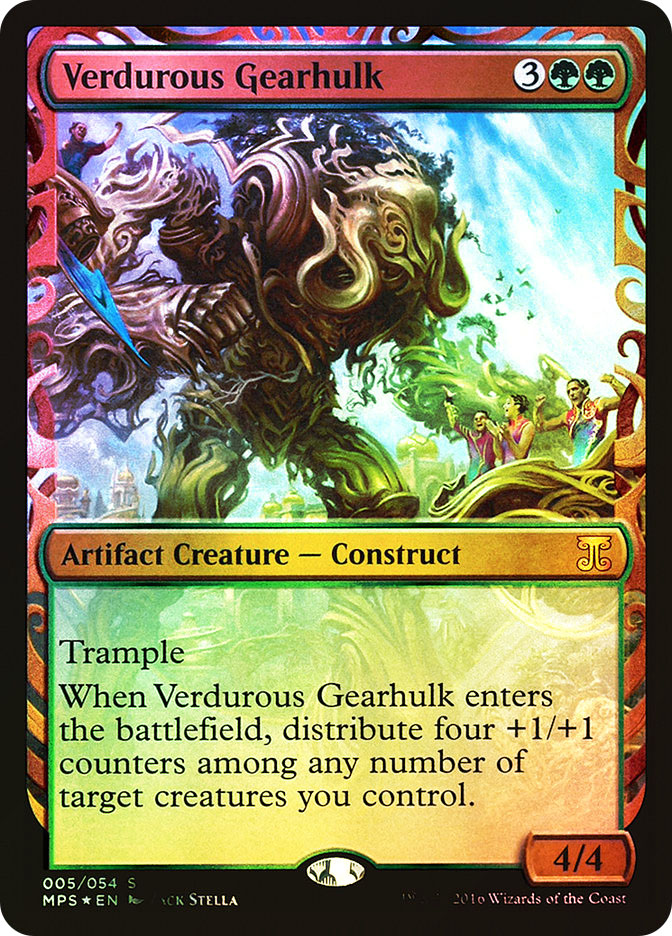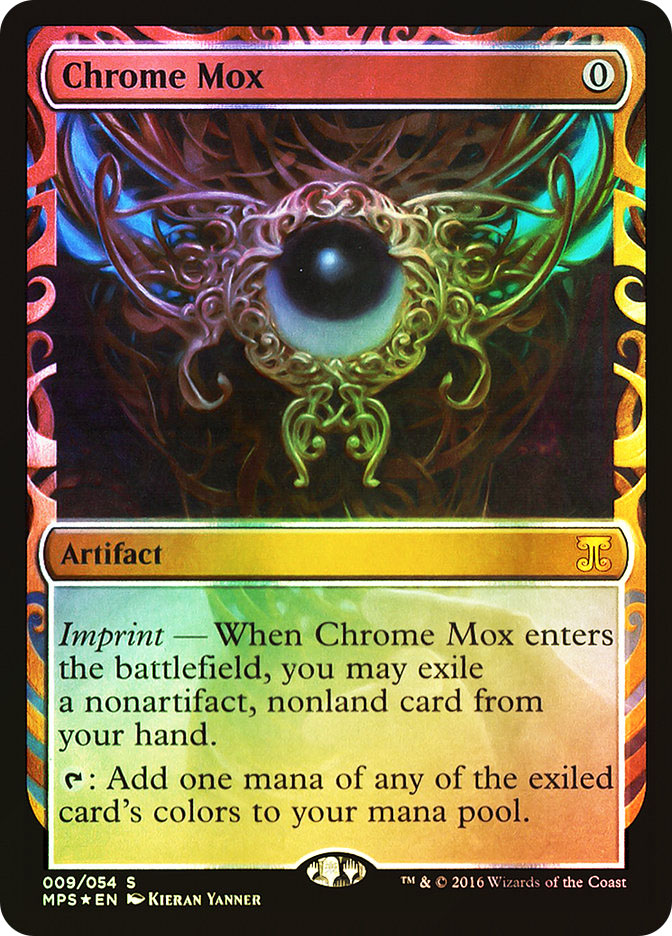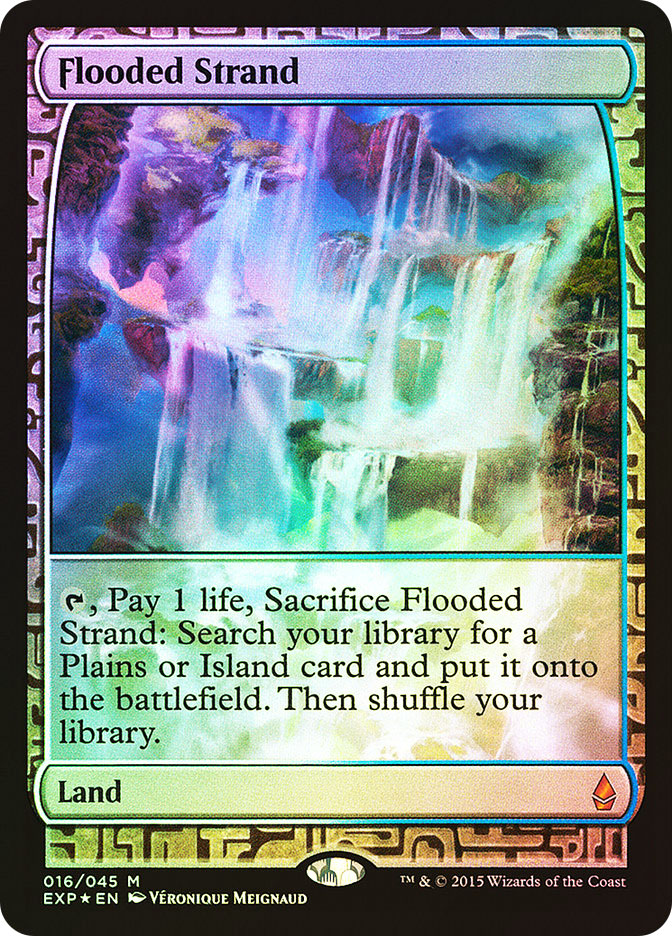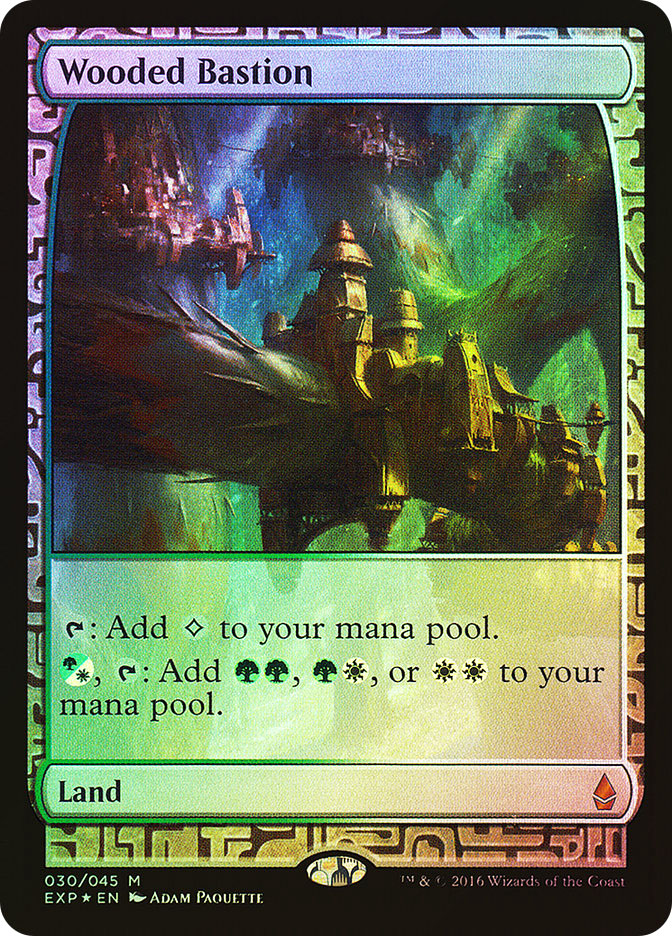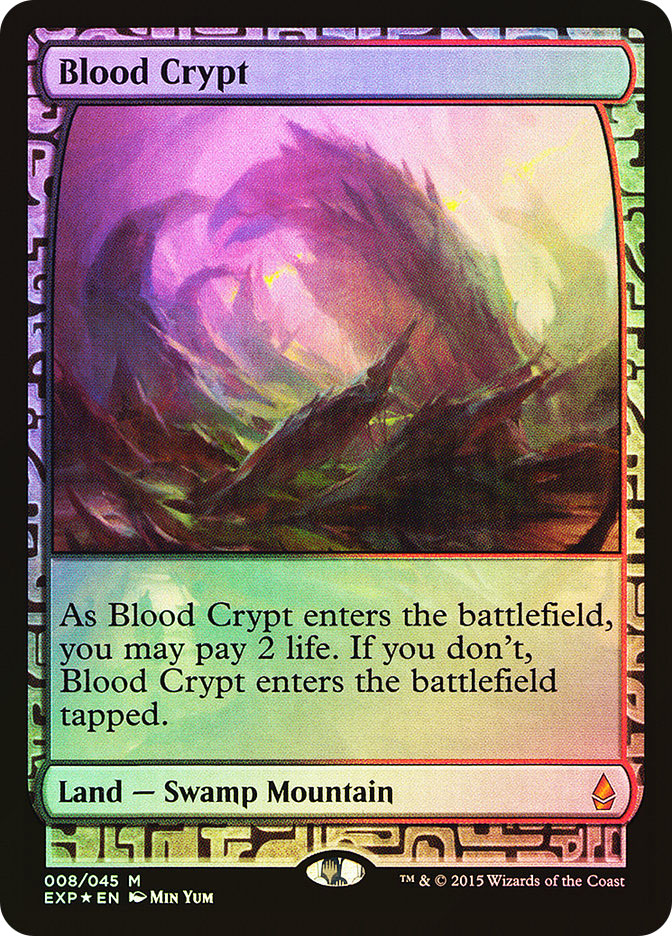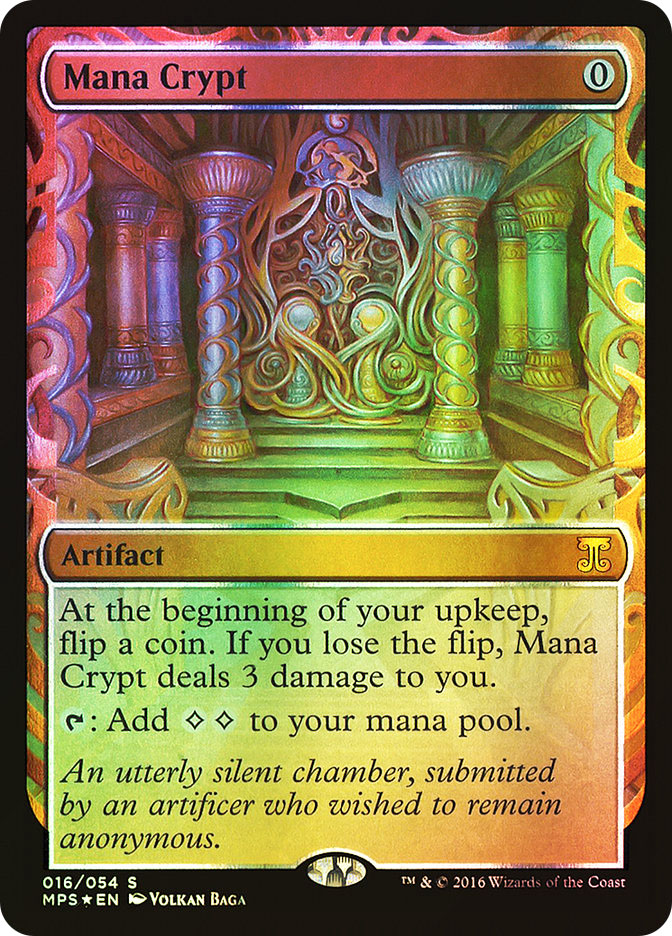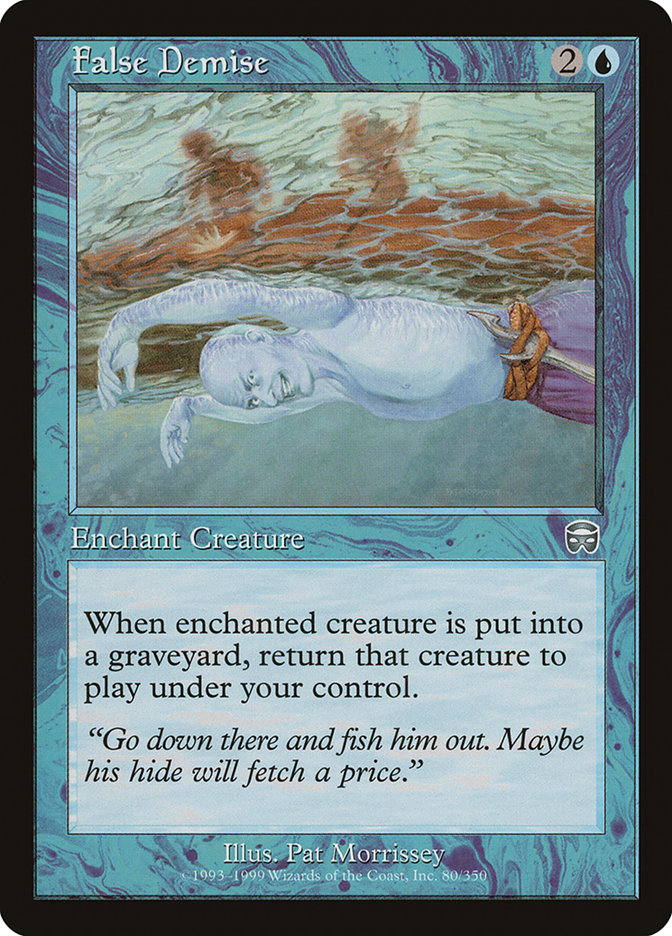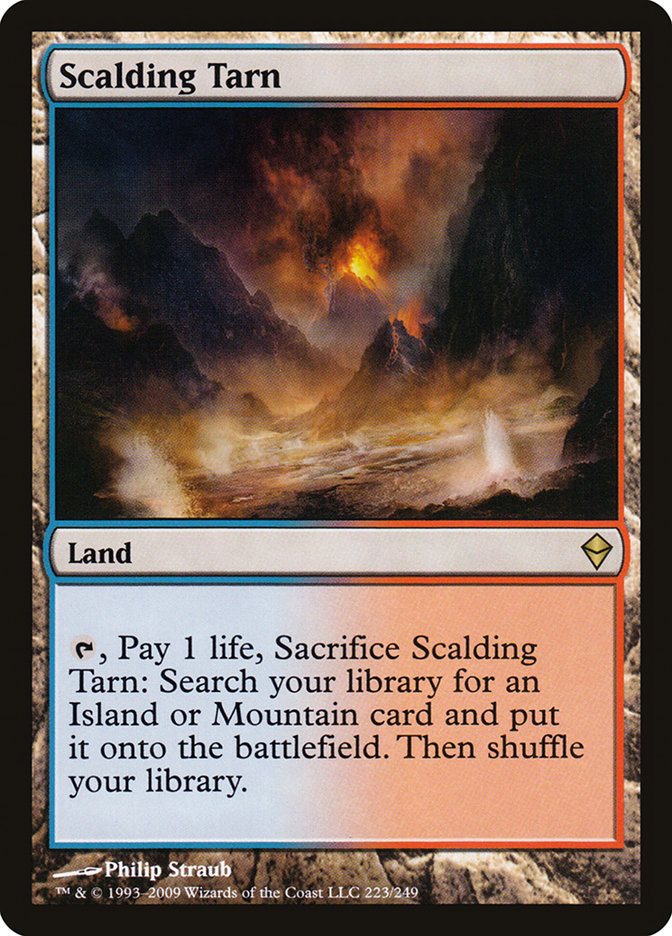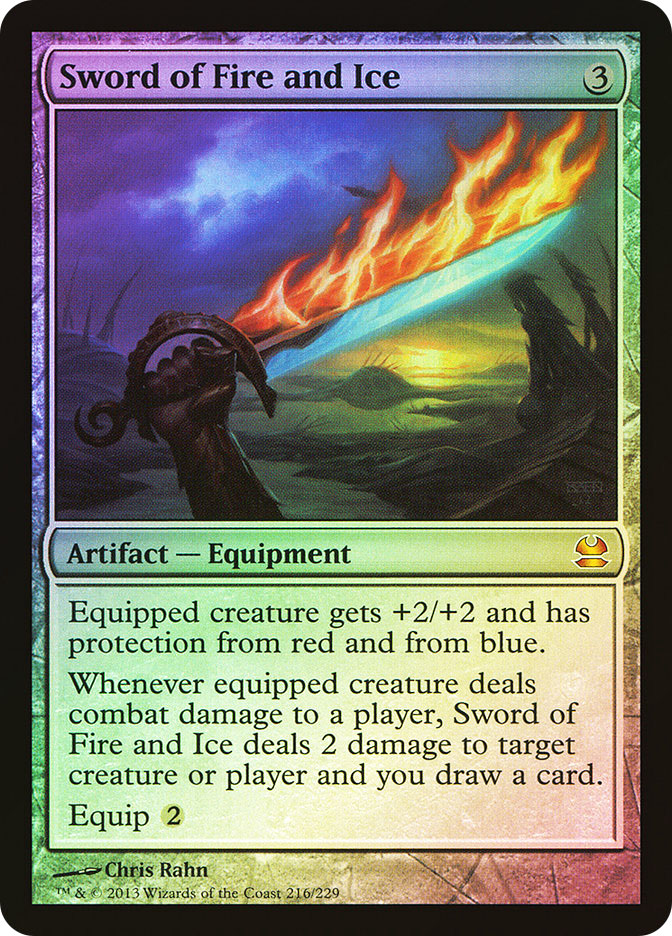I’m here with a special edition of my column because the world of Magic finance was hit with a pretty significant bombshell this week. Remember those sweet alternate-art Expeditions from Battle for Zendikar block? Not only are they back in Kaladesh, they’re going to be with us for the foreseeable future thanks to the Masterpiece Series.
Missed the official announcement? Check it out here, and then come back. I’ll wait.
Obviously, the implications of the Masterpiece Series are huge. I’ll be back Monday with the rest of my Kaladesh set review, but I wanted to break this discussion out so that the Masterpieces would get their due. After spending a few hours catching up on the Masterpiece Series reactions on social media, I’m going to do my best to try and address all of the questions, confusions, and concerns that I’ve seen kicking around the internet.
Will the Masterpiece Series destroy the game, or will it usher in a bright new era of shiny inventions for everyone? In the words of my favorite game show host, let’s find out.
Wait, so will there be cards from the Masterpiece Series in every set from now on? Does that mean we’ll get Masterpieces in Modern Masters, too? How many Masterpieces are we talking about here?
According the announcement, cards from the Masterpiece Series will only show up in Standard-legal sets going forward. Expect Masterpieces in Kaladesh block, Amonkhet block, and whatever plane we get to explore next fall. (Homelands 2: Return of the Baron?) They won’t be in sets like Conspiracy or Modern Masters. (For now, anyway…)
There are slightly more Masterpieces in Kaladesh block than there were Expeditions in Battle for Zendikar block—54 compared to 45—so it’s unclear how variable these print runs are going to be from set to set. I’d expect roughly 100 Masterpieces a year, spread out between the four Standard-legal expansions.
What are my chances of actually opening a Masterpiece?
The announcement puts the odds at one Masterpiece in every 144 booster packs. That’s one in every four booster boxes, or 1.5 Masterpieces per case.
While some people are reporting that the Masterpieces will be more common than the Zendikar Expeditions were, that doesn’t appear to be the case. Remember, we all initially thought that the Expeditions would be distributed at a rate of one in every 213 packs (the same as a foil mythic rare), crowdsourced data proved that Expeditions showed up at a ratio closer to one in every 130 booster packs. It’s safe to assume that the Masterpiece cards will be just about as common as the Expeditions were, albeit with slightly lower odds of opening a specific Masterpiece because the set size is larger.
Interestingly, the announcement hints that the 1:144 ratio may change for future sets, possibly in response to how frustrated people get at having opened hundreds of packs without ever seeing a Masterpiece. If the community reaction errs too far to the “frustration” side of the spectrum, expect these numbers to be goosed a little bit in the future. It’s also possible they’ll lower the ratio in order to preserve the “specialness” of the cards, but that seems less likely to me.
I also wouldn’t be surprised if the prerelease packs are seeded with more Masterpieces than average, at least for Kaladesh. While I don’t have the raw data to prove that this was the case for Expeditions in Battle for Zendikar, anecdotal data from Prereleases seems to back it up. Just one more reason to Prerelease it up!
One in 144 – I like those odds! Does this mean that it’s a good financial decision to buy boxes and crack booster packs in order to go searching for shiny inventions?
No. As always, the average value of a sealed pack will be higher than the potential value of the cards inside. The Masterpiece Series won’t change that. In fact (see below), opening random booster packs is a worse proposition now that the Masterpieces are here.
If you want to open a box, find some friends and hold a draft. Otherwise, just go buy the singles you actually want. It’ll be cheaper in the long run, I promise.
What if I really want a Masterpiece Mana Crypt? How many packs will I have to open before I’m allowed to complain about not having found one yet?
There are thirty Masterpieces in Kaladesh and twenty-four in Aether Revolt. If your odds of opening a random Masterpiece are 1 in 144, you’d have to open 4,320 packs (on average) to complete the set. That means there’s one Mana Crypt in every 120 boxes of Kaladesh. Assuming you’re paying $80/box, that’s $9,600 worth of sealed product.
As I said, just go buy the single.
The WotC announcement lists “Keeping Standard Accessible” as the number one reason for starting the Masterpiece Series. I don’t get it. How is printing a bunch of expensive cards going to make Standard get cheaper?
It all comes down to one thing: average pack value.
Let’s say that large vendors who buy in bulk can get in-print boosters for $2/pack. (This figure is for demonstration purposes only. I’ve never been a buyer at a large vendor, so bear with me if the actual figure is somewhat higher.) If I can open a thousand booster packs and sell the cards inside for an average of $3/pack, I’ll make a thousand dollars. It’s good, easy money, so I’ll probably keep buying packs and doing that as long as I can. So will every other vendor who can get boosters for $2/pack.
Of course, the more singles enter the economy, the lower prices get. Competing vendors will fight to have the best prices, and there are only so many players out there who are willing to pay $50 for a Chandra or whatever. That $3/pack average slips to $2.50, then $2.25, then $2. At a certain point, it stops becoming lucrative to crack packs, so the supply starts to dry up. Then singles prices rise a little due to the lack of supply, so a few more packs are open. The price drops again. It’s an equilibrium based on the average pack value, and it’s one of the main things that determines the value of cards in Standard. It’s why you aren’t going to get a new set with fifteen $50 cards – people will just keep buying boosters until the prices come down.
What the Masterpiece Series does is add a bunch of average pack value that Standard players don’t have to worry about. Let’s say that the average Masterpiece retails for $75. Averaged out over 144 packs, that means that each and every pack has roughly 50 cents of value tied up in the Masterpiece slot. Before, that $2/pack equilibrium was exclusively tied up in cards that most Standard players had to own – Planeswalkers, fetchlands, etc. Now, that figure is down to $1.50 with a full quarter of the pack value tied up in a shiny prize that the vast majority of Magic players can feel free to ignore.
In essence, adding the Masterpiece Series to Standard accomplishes something similar (at least where Standard singles prices are concerned) to lowering the price of a booster pack by 20-25%. Considering that a top-tier Standard deck cost upward of $800 (!) last fall, you can make a pretty good argument that this is a necessary solution to keep Magic’s most important format within the realm of affordability.
It’s worth noting that lands (Expeditions) and artifacts (Inventions) are likely to be the best overall pools that WotC can pull from for Masterpieces. The next block is Egyptian God-themed, so Theros block’s fifteen Gods are likely to be among the fifty-odd Masterpieces we get in the spring. Those might not affect the price of Standard nearly as much as they will with Kaladesh.
Does this mean that Standard singles are going to be cheaper from now on? By how much?
Yes, Standard singles should be cheaper from now on. That 20-25% figure is a good place to start, but you can’t just lop that off the expected price of every card and call it a day.
It’s wrong to extrapolate too much from Battle for Zendikar, which was a relatively underpowered set, but the biggest chase mythics—Gideon, Ally of Zendikar and Ulamog, the Ceaseless Hunger—are still worth quite a bit.
The non-mythic rares and casual mythics seemed to take the biggest hit, a trend that seemed to continue in Oath of the Gatewatch. In previous years, elite cards like Eldrazi Displacer, Sylvan Advocate, and Thought-Knot Seer probably would have enjoyed a healthy amount of time at $10+. With a couple of high-end mythics and a bunch of Expeditions eating up the value, though, it just didn’t happen.
Overall, the existence of the Masterpiece Series makes me less likely to speculate on non-mythic rares in Standard-legal sets. I certainly don’t want to spend more than $2 or $3 on any rare that I don’t expect to see play in multiple Tier 1 lists.
Wait, so if I don’t get lucky enough to open a Masterpiece, will the contents of my booster box be worth less than it would have been otherwise?
Yep. This is probably the biggest downside of the Masterpiece Series in my mind, because the variance is going to primarily hurt the more casual players who only buy a box or two. The big stores and dealers will be fine – over multiple cases, the Masterpiece Series lottery will even itself out. But if you open two boxes and don’t get one, it really hurts that bottom line. Your cards would have been worth more had those cards not existed.
Remember what I said earlier about buying singles instead of boxes? If you want to get certain cards, buy singles instead of boxes. The Masterpiece Series will make singles cheaper and boxes less lucrative. Embrace it.
Aren’t you worried about having a set-within-a-set in every block going forward? This is starting to remind me of sports cards in the nineties, with extra special super-duper ultra rares that made everything else in the pack worthless. Is Magic at risk of the same kind of value collapse?
First of all, the introduction of subsets is not what killed sports cards in the nineties. There were lots of issues with that hobby, but the main problem was that there was very little real-world demand for the cards. Most people collected them because they were worth money, not because they had any inherent love of baseball cards. And once the system started to falter, it fell down like a house of…well, you know.
Even if you did want to blame subsets for the death of baseball cards, the comparison to Masterpieces doesn’t really hold water. The only point of baseball cards was collecting them, so you had to churn through hundreds of packs in order to complete the elite subset of Greatest Throwback Uniform Rear Reflectors or whatever. It’s easy to burn out when 95% of the packs you open have zero cards that you actually want.
But first and foremost, Magic is a game. People want the cards for their functionality, and on that level the Masterpiece Series is purely optional. Don’t care about shiny widgets? Fine—you can feel free to safely ignore them. I don’t think that WotC is expecting that more than a tiny handful of players will attempt to collect the whole set—a far cry from what Topps and Fleer were doing in 1993.
If WotC had announced that Chandra, Torch of Defiance was only available in one out of every hundred boxes, we could have a nice, scary conversation about the end of Magic. The opposite thing is happening here, though—WotC is making this move in part so that cards like Chandra are less expensive. That can’t be a bad thing for the future of the game.
Okay, but don’t you think WotC is overdoing it on the reprint front? There’s Modern Masters, Eternal Masters, From the Vault, all the Conspiracy Reprints, new Commander decks, reprinted Commander decks, judge foils, RPTQ foils, GP foils, and now the Masterpiece Series…
It’s worth remembering that it takes Wizards of the Coast between twelve and 24 months to respond to marketplace trends. Sets take a really long time to design, develop, print, and market. I would bet that overprinting staples was the last thing in WotC’s mind when they came up with the Masterpiece Series. Remember, two years ago, Scalding Tarn was hitting $100 and the largest community concern was that Modern had started feeling like the exclusive purview of the very richest among us.
At this point, I am getting a little worried about reprint fatigue. There are only so many Magic players who are actually willing to spend $100+ on a shiny card, and a lot of them are feeling pretty overwhelmed right about now. It’s certainly possible that the Masterpiece Series will prove a bridge too far.
I doubt it, though. Remember: you have to open ten thousand dollars’ worth of Kaladesh product to get that Mana Crypt. And what percentage of them will ever hit the secondary market? Some players will immediately trade them away or buylist them in order to get more cards, but plenty of Masterpieces are going to be opened by casual players who buy their packs down at Wal-Mart and stuffed into kitchen table decks. Others will make them the centerpiece of a Commander or Modern deck, a living memory of that giddy moment when you opened a $120 variant of Aether Vial.
If you’re worried about reprints tanking the value of your collection or dragging the secondary market down, I get it. Personally, I think the massive number of yearly releases coupled with the prevalence of the Masters series and the number of high-profile reprints in Conspiracy is unsustainable, and I’m hoping that WotC scales it back a touch. But the Masterpiece Series is a drop in that bucket, and the game can easily handle it. Think about it: did the Zendikar Expeditions destroy the value of your fetchlands, shocklands, or filter lands?
I’m still bummed that I dropped a ton of money on that Mana Crypt foil from Eternal Masters, though. Is there anything else I should avoid right now in preparation for future Masterpieces?
I do think that the Masterpiece Series will change the high-end foil economy fairly significantly. Kaladesh’s inventions are absolutely gorgeous, and unless the foiling process is horrible (early videos indicate that it is different from a pack foil, but it doesn’t have that heinous finish found on From the Vault cards), they will be incredibly sought-after.
What does this mean for a card like Sword of Fire and Ice? Right now, it has four printings:
· Darksteel set foil – $70
· Judge Program foil – $80
· Modern Masters 2013 foil – $120
· Kaladesh Masterpiece – $150
That’s a pretty big range, and it’s notable that the Darksteel set foil is only $20 more expensive than the cheapest non-foil version of the card. I think this sort of thing will become more prevalent, with the less desirable foils losing value while the “better” foils remain highly sought-after. In this case, it’s pretty clear that players preferred the Chris Rahn art to the Mark Zug original.
What foils might lose ground like this? It’s hard to say without seeing the replacement art first. My gut reaction would have been to say that Mana Crypt was fine, but then I saw how awesome the new version looked. Those judge foils with the giant foil comets on them come to mind as being outclassed by Masterpieces, but some of those have fantastic alternate artwork. When in doubt, go tap your local neighborhood Vorthos on the shoulder and ask them which card they prefer.
Do the Zendikar Expeditions still look good as long term holds now that they won’t be as special or unique?
Unfortunately, I think the roll-out of the Masterpiece Series is bad news for the future price of the Zendikar Expeditions. As we’ve discussed, there just aren’t that many players financially capable of collecting scores of $100+ foil cards. The Masterpiece Series gives them more options, and most Masterpiece collectors will probably stick to a small handful of their favorite cards.
I certainly don’t think you need to panic-sell your Expeditions—they will likely hold their value and fluctuate along with the rest of the market, but they are less special now, especially the lower-end ones. That hurts their upside considerably.
What do you think about the current Masterpiece Series prices? Is Mana Crypt really a $200 card? What might a bulk Gearhulk ultimately be worth?
As of this writing, here are the SCG prices for the Masterpieces:
Mana Crypt – $200
Mana Vault – $200
Mox Opal – $180
Crucible of Worlds – $150
Sword of Fire and Ice – $150
Sol Ring – $150
Sword of Feast and Famine – $120
Sword of Light and Shadow – $120
Aether Vial – $120
Lotus Petal – $100
Chrome Mox – $80
Painter’s Servant – $80
Steel Overseer – $70
Scroll Rack – $60
Solemn Simulacrum – $60
Static Orb – $50
Gauntlet of Power – $50
Hangarback Walker – $50
Lightning Greaves – $50
Cloudstone Curio – $50
Champion’s Helm – $50
Chromatic Lantern – $50
Mind’s Eye – $50
Rings of Brighthearth – $50
Sculpting Steel – $50
Cataclysmic Gearhulk – $40
Combustible Gearhulk – $40
Noxious Gearhulk – $40
Torrential Gearhulk – $40
Verdurous Gearhulk – $40
That puts the total value of the set at $2,540, or about $85 per card. That’s not far from the $75/card figure I estimated earlier in this article (before I actually took a look at the prices), so I think most of these prices are sustainable over the long haul. Mana Crypt and Mana Vault might end up closer to $150, and if any of the Gearhulks are truly terrible I could see them ending up in the $20-$30 range. All told, I’d expect Masterpiece prices to drop 10-20% across the board once packs start actually being opened.
That said, Chromatic Lantern and Lightning Graves both feel underpriced to me at $50—they’re top-tier Commander staples that fit in almost every deck. If you want either of these, I’d snap them up ASAP.
I skimmed this article because social media has destroyed my ability to read more than a hundred words at a time. Can you please summarize what will change in Magic finance thanks to the Masterpiece Series?
Okay, but you can’t shout at me in the comments unless you read the whole article, got it?
The price of Standard singles in sets with Masterpieces will be lower thanks to Masterpieces. If I had to guess, I’d say Standard prices will be 20-25% lower. Because more of the value in each pack is tied up in the Masterpiece slot, opening booster packs is a much higher-variance experience—buying the singles you need instead of cracking packs is a better call than ever. While I have some worries about all of the high profile cards being reprinted these days, I don’t expect the Masterpiece Series to hurt the price of existing cards all that much. “Ugly” foils that are reprinted as gorgeous Masterpieces are likely to see the biggest drop in price. The current value of Masterpiece Series cards is fair, and I’d only expect to see a small drop in price once packs start getting opened.


